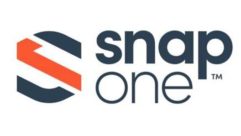Podcasting: A Look Inside One School’s Implementation
Sep 6, 2006 12:41 PM,
By Linda Seid Frembes
While podcasting has been around for less than a decade, its popularity has grown tremendously in the last few years. After Apple began adopting the technology in 2003, podcasts from a seemingly endless variety of sources was available at the click of a mouse button. Podcasting is also gaining ground in the education market as a means to capture and distribute class lectures at institutes of higher learning.
In the Fall of 2005, the University of California, Davis (UC Davis) campus undertook a pilot run of recording devices and distribution methods to see if podcasting was suitable for their learning environment. In the calendar year 2004, the Hart Hall Media Distribution Lab at UC Davis checked out 17,307 recordings of campus lectures, all of which were on cassette tape. There was an obvious demand for the recordings and, given the advancement of digital technology, was there a better way to record and distribute them?
Why Podcasting?
Podcasting technology has several advantages over analog and even other digital methods. Akin to a recorded radio program or TV show, users can subscribe to podcasts via RSS feeds using XML readers such as Apple iTunes. Rather than searching for the necessary content, subscribed users have the content pushed to them automatically. Content can be audio, video, and other file formats such as pictures and PDFs.
The push for podcasting on campus became a unified effort under the direction of the Information and Educational Technology’s (IET) Interim Vice Provost Peter Yellowlees. He envisioned students listening to lectures while working out at the gym or in other situations where portable media players are often used.
“Digital recording has been on campus for a while but there was no simple solution for campus-wide implementation,” says Rodd Kleinschmidt, computer lab manager for the Media Distribution Lab at UC Davis. “Since permanent computers were not available in lecture halls, our campus-wide solution did not have to be centered around computer hardware or software.”
As such, two models of portable digital recorders were tested in the pilot run as well as two digital distribution systems: one in MyUCDavis, UC Davis’ intranet, and a separate podcasting website developed by IET-Mediaworks. Digital recorder models were selected based on three criteria: ability to record directly as an mp3 file, line-level input, and USB interface. Each model faired well in the pilot run, and, based on usage and student surveys, the use of podcasting was a welcome addition to the campus.
Permanent Solution
Most classrooms on the UC Davis campus have a standard media cabinet, and 10 of its lecture halls had a cassette recorder permanently installed. The portable devices tested in the pilot run had one major flaw—portability. With the usage success, the university was looking for a permanent solution to install in the lecture hall media cabinets.
Over the Winter 2005 break, the university purchased and installed a Marantz PMD570 digital recorder in its 123 Sciences Lecture Hall. The rackmounted device was the permanent solution needed to further the podcasting initiative. Added benefits included a greater range of recording options than either portal unit tested, as well as the ability to automatically pause during extended silences and resume recording when the speaker continues. A permanent installation also meant that the instructor only had to carry a small compact flash (CF) card to class. In addition, the Marantz recorder had a simple, three-button operation similar to a cassette player.
Distribution
Charlie Turner, supervisor of the programming group at IET-Mediaworks, had created a podcasting website and infrastructure to support other projects. The site was included in the pilot run because it supported the same in-browser playing and file download ability as podcasting in MyUCDavis, but it also allowed users with any MP3 player to subscribe to an RSS feed. After the Fall 2005 pilot run, it was decided that Turner’s application was the better choice.
“We had to create a distribution system from the ground up, which is easy to do on a small scale,” Turner says. “As we scale up for a campus-wide implementation, larger issues arise like the need for an Akamai file server system to handle bandwidth and a method to easily add ID3 tags to the files.”
To ensure adoption by the teaching staff, each step in the process—from recording to uploading the files to distribution—was made as simple as possible to the respective user. The issue of ID3 tags was solved at the server level, while the upload form on the Web uses as much auto fill information as possible. “To upload a new file, an instructor, at minimum, has to input four characters and click three buttons. The process is simple even though the back end is complex,” Kleinschmidt says.
Podcasting has gained so much interest across the University of California system that a session on podcasting was included at this year’s UC Computing Services Conference, a UC-wide gathering for IT staff. “Podcasting had enough visibility to get a time slot,” Turner says. “There is definitely grass roots interest, and with participatory media the possibilities are wide open.”
Moving forward, the greatest challenge to Turner and Kleinschmidt is a matter of scale. “Are we ready for 25,000 users?” Turner says. “Probably not yet; there is a cost associated to that level of use so we are exploring other technologies like the use of peer-to-peer networks to alleviate bandwidth issues.”
Currently, an average of 13 classes per quarter use the campus podcast system, with more than 4,000 users accessing digital lectures, and more than 50,000 downloads to date. Student surveys found that, on average, half of the students in each class subscribed to their course podcast during the Winter 2006 quarter. By Spring quarter, usage of the system had increased to 69 percent.










